Introduction
SaaS and PaaS are two fundamental cloud computing models that offer distinct advantages for businesses. SaaS, or Software as a Service, provides fully functional software applications accessed through a web browser, eliminating the need for installation and maintenance. This subscription-based model offers cost-effectiveness, flexibility, and scalability, catering to the evolving demands of businesses.
On the other hand, PaaS, or Platform as a Service, offers a comprehensive development environment for developers, streamlining the application development lifecycle. It provides essential tools, libraries, and frameworks, allowing for increased efficiency and faster time to market. With its scalability and collaborative features, PaaS empowers developers to focus on coding and innovation while leaving infrastructure management to the service provider.
While SaaS excels in accessibility and convenience, PaaS is ideal for organizations prioritizing rapid development cycles and scalability. Understanding the nuances of each model is crucial for selecting the most suitable cloud computing option that aligns with business objectives and maximizes cloud investments.
What is SaaS (Software as a Service)?
SaaS, short for Software as a Service, represents a cloud computing model that delivers applications over the internet through a subscription-based approach. This paradigm shift allows users to access software via a web browser, bypassing the traditional requirements for installation and ongoing maintenance on their own computers. As the software is hosted remotely by the service provider, they are responsible for the underlying infrastructure, ensuring regular updates, and maintaining robust security measures.
The SaaS model is akin to a magazine subscription; just as you gain access to issues by paying the subscription fee, SaaS operates on a similar principle where access to software is granted post-payment, often on a monthly or annual basis. This approach aligns with the contemporary trend of prioritizing operational expenditures over capital investments, providing users with a cost-effective, flexible, and scalable solution.
To illustrate the transformational impact of SaaS, consider the early days of deploying web services, which involved substantial costs for server procurement, on-site setup, and security measures to protect against data breaches. However, with SaaS, these barriers are significantly reduced as the service provider manages these aspects, allowing users to focus on business-critical operations.
Recent insights reveal that companies are increasingly mindful of their software spending, with negotiations and purchasing cycles extending, as reported by Amanda Taitel from Vendr Verified. In today's competitive market, understanding the timing of purchases and renewals can lead to significant savings, with trends showing winter as a peak season for sales and summer as a period where buying processes tend to elongate.
Furthermore, the SaaS landscape is not just about convenience; it's also about ensuring secure access and governance. Security teams must have clear visibility into who is accessing applications, the extent of their access, and the devices being used, especially when it comes to high-privilege users. This heightened focus on identity and access governance is crucial for safeguarding against unauthorized use and potential security breaches.
In conclusion, SaaS is not merely a means to access software; it's a comprehensive service model that caters to the evolving demands of businesses, offering accessibility, flexibility, and security, while also adapting to financial and operational strategies that align with market dynamics.
What is PaaS (Platform as a Service)?
Platform as a Service (PaaS) has emerged as a powerful cloud computing model that streamlines the application development lifecycle, providing developers with a comprehensive environment equipped with necessary tools, libraries, and frameworks. This model shifts the focus from infrastructure management to coding, where PaaS providers maintain the underlying servers, storage, and networking. Accessible via the internet, developers can readily deploy and test applications, enjoying increased efficiency and faster time to market.
For instance, Dunelm Group, the UK's leading homewares retailer, leveraged PaaS to support their extensive digital platform, which accounts for a significant portion of their revenue. Similarly, Bosch's innovative solid oxide fuel cell systems are complemented by a digital twin, optimizing performance and cost over time; this is made possible by the robust backend architecture enabled by PaaS. Moreover, companies like IFCO have harnessed PaaS solutions from providers like Rackspace to leverage expertise and customer-centric support, allowing even small IT teams to achieve significant cloud milestones.
The development process is a complex journey that involves multiple stages and diverse programming preferences. PaaS environments, such as Microsoft Visual Studio, create a unified workspace where developers can write, edit, and debug code in various languages without switching tools, aligning with the vision of a 'happy' developer depicted in Microsoft's advertising. This integrated approach not only simplifies the development workflow but also aligns with the strategic goals of businesses seeking agility and innovation.
As the cloud computing landscape continues to evolve, PaaS stands out as a dedicated service from cloud providers, enabling control over software aspects while leveraging professional infrastructure. Whether accessed as a private service or deployed on public infrastructure, PaaS offers a scalable, reliable, and flexible solution to meet the demands of modern application development, as highlighted by the Docker State of Application Development Report and the growing trend in cloud development environments.
Key Differences Between SaaS and PaaS
SaaS (Software as a Service) and PaaS (Platform as a Service) are two fundamental cloud computing models each with distinct features catering to different needs. SaaS delivers access to fully functional software applications over the internet, allowing users to operate without the complexities of installation, maintenance, or infrastructure concerns. Renowned for its accessibility, SaaS ensures that applications are available from any device with an internet connection, leveraging a subscription model that forgoes significant upfront costs in favor of a pay-as-you-go approach. This ensures automatic updates are managed by the provider, granting users the most current features without additional effort.
In contrast, PaaS provides a comprehensive environment that empowers developers to create, deploy, and manage applications with greater ease and flexibility. This is particularly essential as organizations, ranging from agile startups to expansive enterprises, increasingly rely on the cloud. The infrastructure for building cloud systems now constitutes a significant portion of IT investments, signaling a shift towards external infrastructure and management services.
Moreover, PaaS adapts to the fluctuating demands of development, offering a variety of pricing models, including usage-based pricing or subscriptions. This flexibility is crucial for services where consumption can be unpredictable, and it also allows for the provision of a basic service tier at no cost, with the option for users to pay for more advanced features or capabilities.
Organizations such as Brex, which has evolved from offering a single product like a credit card for startups to a multi-product suite, exemplify the strategic thinking behind adopting cloud services. Their product development hinges on understanding customer needs, market trends, and their own vision for the future. This meticulous approach is mirrored in the use of PaaS, where the choice between building an in-house solution or partnering with providers is critical to delivering the best possible solution while minimizing customer change management overhead.
As businesses aim to scale globally and manage expenses more effectively, the move towards multi-product solutions that address specific customer pain points becomes increasingly pronounced. This customer-centric approach, coupled with the alignment of product offerings with market demands and organizational vision, underpins the strategic decision-making in adopting and implementing cloud computing models.
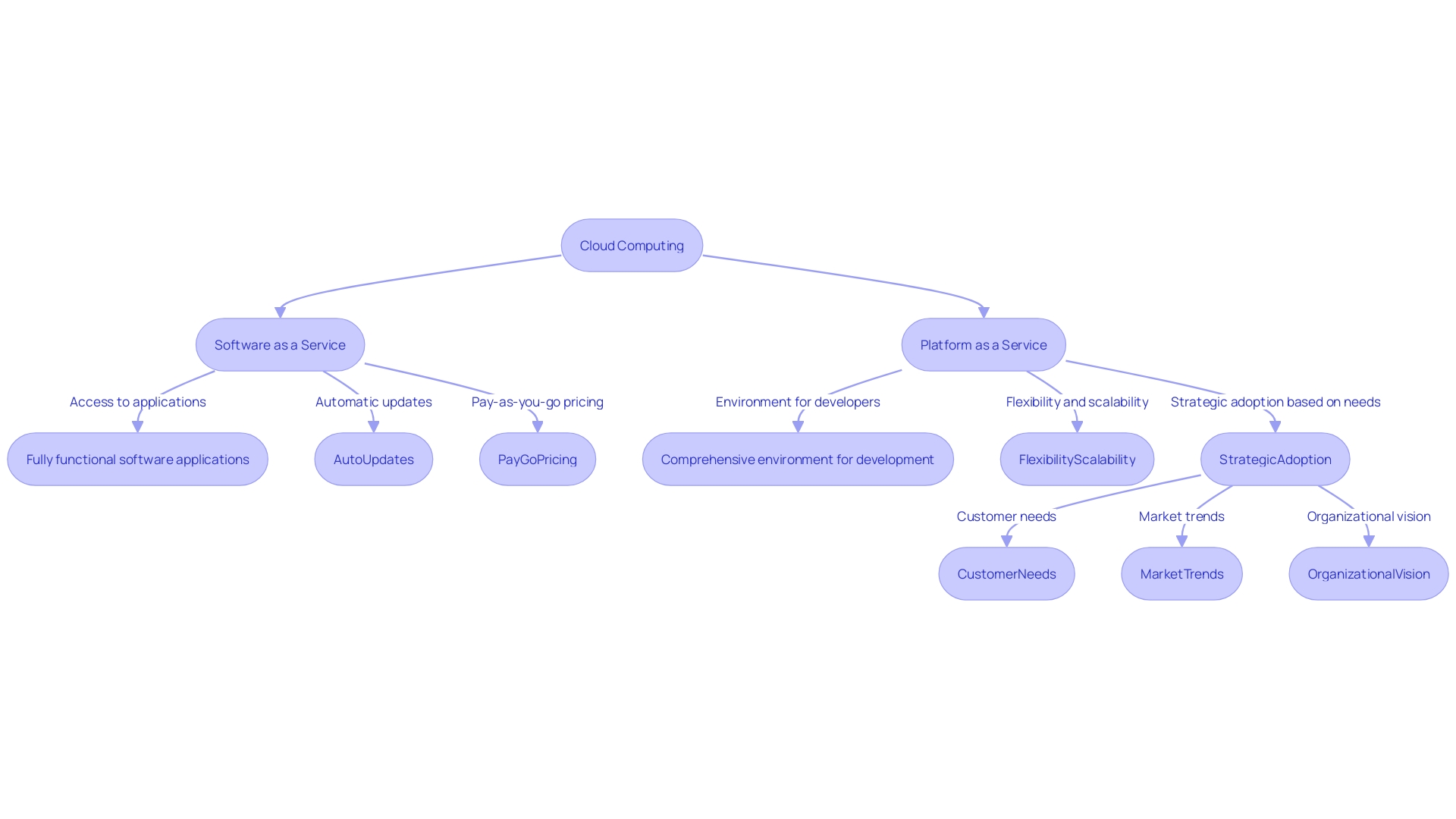
Characteristics of SaaS
Software as a Service (SaaS) is a cloud computing model that delivers a range of benefits, distinguishing it from other models. It provides multi-tenancy, allowing a single software instance to serve numerous clients simultaneously, which can optimize resource utilization and cost efficiency. Access to SaaS applications is typically through web browsers, offering platform independence and the convenience of use from any device with an internet connection. The maintenance burden, including updates and security, is managed by the SaaS provider, freeing users from these responsibilities. Furthermore, SaaS offers flexible scalability—customers can modify their subscription levels in alignment with their changing needs. For instance, in the realm of entertainment, services like Netflix operate on a SaaS model, offering content access on a monthly subscription basis. Insights from the industry reveal that SaaS buying trends are influenced by seasonal factors, with periods like December showing a spike in new purchases as companies determine budget surplus, while renewal processes can be lengthier in months like January. Additionally, the SaaS expenditure across different sectors such as Productivity, Dev Ops, and Human Resources remains consistent irrespective of company size, highlighting the pervasive reliance on SaaS solutions across various verticals.
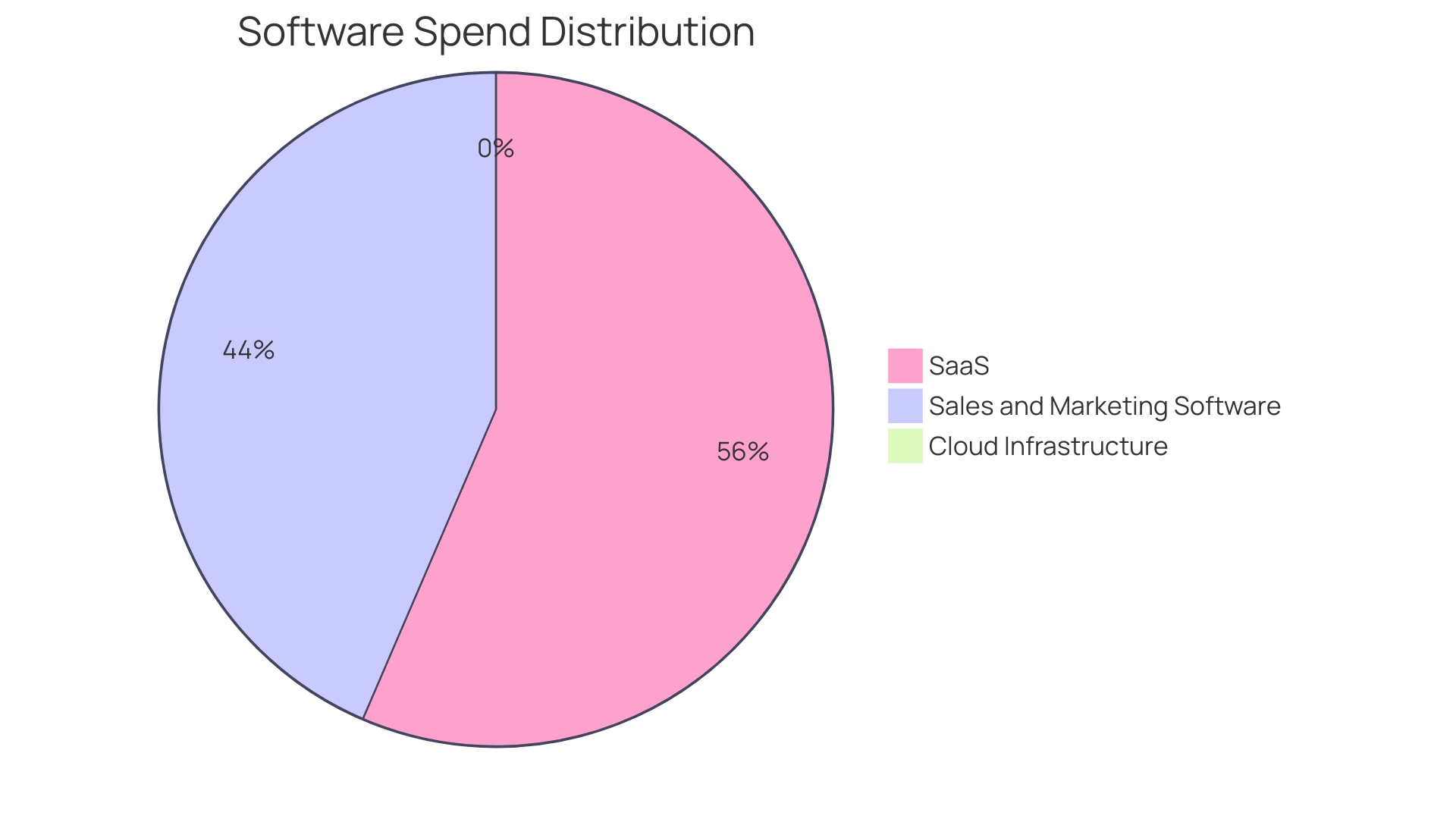
Characteristics of PaaS
Platform as a Service (PaaS) emerges as a pivotal player in the realm of cloud computing by providing developers with a comprehensive development and deployment platform. It integrates essential tools, libraries, and frameworks, streamlining the app creation process and significantly cutting down development time. PaaS platforms shine in their scalability, effortlessly adapting to the ebb and flow of resource demands. This scalability is crucial for developers who require the flexibility to adjust resources in response to varying workloads.
Collaboration is another cornerstone of PaaS, as it furnishes a shared environment where multiple developers can concurrently contribute to a single project without stumbling over each other. This collaborative angle is particularly appealing for teams that are distributed across different geographies, as it consolidates efforts and hastens the development cycle.
A key benefit that sets PaaS apart is its ability to abstract the complexity of infrastructure management. With PaaS, the intricacies of overseeing servers, storage, and networking are managed by the provider, liberating developers to focus solely on their craft: building and deploying stellar applications. Indeed, the evolution of Cloud Development Environments (CDEs) underscores this shift towards more seamless, online software development that champions both productivity and security.
The adoption of PaaS is fueled by the transformative experiences of organizations like IFCO, whose partnership with Rackspace Technology exemplified the strategic advantage of leveraging expert insights and robust PaaS capabilities. Such collaborations underscore the direction in which cloud computing is heading, as noted in the 2024 Docker State of Application Development Report, which reflects on the current landscape and future potential of software development within the cloud ecosystem.
In the context of cloud service models, PaaS distinguishes itself from Software as a Service (SaaS), which delivers ready-made applications, and Infrastructure as a Service (IaaS), which provides the raw hardware infrastructure. PaaS uniquely grants developers control over software aspects, including operating systems and programming languages while relieving them of the hardware management burden. As a result, PaaS is accessible in various forms, from dedicated services offered by cloud providers to private services behind firewalls or as software deployed on public infrastructure, each catering to different organizational needs and IT strategies.
Advantages of SaaS
Software as a Service (SaaS) is reshaping the way businesses operate, offering substantial benefits that align with the dynamic needs of modern enterprises. One significant advantage of SaaS is the reduction of initial expenses, as it removes the necessity for capital investment in hardware and software licenses. Instead, SaaS operates on a subscription basis, allowing businesses to distribute costs over time.
Accessibility is another cornerstone of SaaS, enabling users to work from any location with internet connectivity. This feature not only facilitates remote work but also supports business continuity and disaster recovery. SaaS applications are maintained by the providers, ensuring that updates, security patches, and overall software health are managed without taxing internal IT resources.
Furthermore, SaaS solutions offer unparalleled scalability, which is critical for businesses in periods of growth or fluctuation. Companies can adjust their subscription levels to match their current operational demands, ensuring efficiency and cost-effectiveness.
Real-world examples like Calendly demonstrate the potential of SaaS. From its humble beginnings to becoming an essential scheduling tool, Calendly leveraged the SaaS model to scale rapidly without significant upfront investment. Similarly, Delivery Hero's IT team improved operational efficiency by adopting SaaS solutions for account recovery processes, streamlining workflows for a vast employee base.
Spotify's foray into podcasting with a SaaS approach underscores the platform's adaptability and success in engaging a massive audience. The SaaS model has facilitated their expansion into video podcasts, further illustrating the model's capacity for innovation and evolution.
As organizations navigate the complexities of the digital landscape, SaaS stands out as a flexible, cost-effective solution that enables agility and sustained growth, evidenced by the strategic adoption of SaaS across various industries and company sizes.
Advantages of PaaS
Platform as a Service (PaaS) has transformed the way developers and businesses approach application development and deployment. By providing a comprehensive development environment, PaaS eliminates the complexities of setting up and managing underlying infrastructure, significantly accelerating the time-to-market for new applications. This has been clearly demonstrated by the University of Gothenburg, which embraced Red Hat Enterprise Linux as its standard platform, streamlining the development process for its new web platform in 2020.
Moreover, PaaS inherently supports scalability, enabling applications to seamlessly adapt to fluctuating workloads and user demands. This eliminates the need for manual scaling, which can be both resource-intensive and prone to errors. The ability of PaaS to foster collaborative development is another key advantage, as it allows multiple developers to concurrently contribute to a project, thereby enhancing productivity.
Additionally, PaaS entrusts the responsibility of managing the infrastructure to the service providers, liberating developers to concentrate on their core competencies such as coding and creating innovative applications. This shift in focus towards development, rather than infrastructure management, can lead to more creative and efficient solutions.
Case in point, Bosch's development of the solid oxide fuel cell (SOFC) system exemplifies the power of PaaS in supporting innovative projects. The SOFC system benefits from a digital twin provided by the PaaS, which offers visualization and monitoring capabilities essential for optimizing cost and performance throughout the system's lifespan.
The sentiment that the comprehensive toolsets offered by PaaS providers are making application development more straightforward echoes across the industry, as noted in Docker's 2024 State of Application Development Report. This report, drawing on a survey of over 1,300 respondents, highlights the trend towards cloud-based development environments and tools, signifying a paradigm shift in software development practices.
In the current climate, the agility and efficiency provided by PaaS are more crucial than ever, as organizations strive to meet the demands of an increasingly digital world while ensuring the security of their applications. The widespread adoption of PaaS signifies a commitment to innovation and a recognition of the need to evolve traditional development methodologies.
Disadvantages of SaaS
While the SaaS (Software as a Service) model presents a convenient approach to accessing software, it's essential to understand the trade-offs this model entails. For instance, without a stable internet connection, users may not be able to access SaaS applications at all, which can cause significant business disruptions. Moreover, since SaaS applications must cater to a wide audience, they can lack the bespoke customization that some businesses require for their unique processes.
Data security is another critical concern. With data stored on cloud servers, the responsibility for safeguarding sensitive information lies with the service provider. This scenario raises questions about data privacy and requires businesses to trust that providers are implementing robust security measures. However, as indicated by recent industry insights, ensuring the security of identities and access governance is paramount and falls within the remit of a company's security and IT team, highlighting the shared responsibility in protecting SaaS applications.
The dependency on the SaaS provider extends to software maintenance and updates. Any service disruption or security breach on the provider's side can have cascading effects on business operations. This risk was underscored by a study which found UK businesses highly dependent on connectivity, with substantial financial and productivity losses during internet outages.
Furthermore, as SaaS platforms evolve, they may shift focus from user needs to maximizing profits, a trend noted by Cory Doctorow as 'platform enshittification'. This can lead to a degradation of service quality over time, as the platform's priorities change. Therefore, it's crucial for organizations to diligently assess SaaS offerings, considering both the risks and the strategic benefits they present.
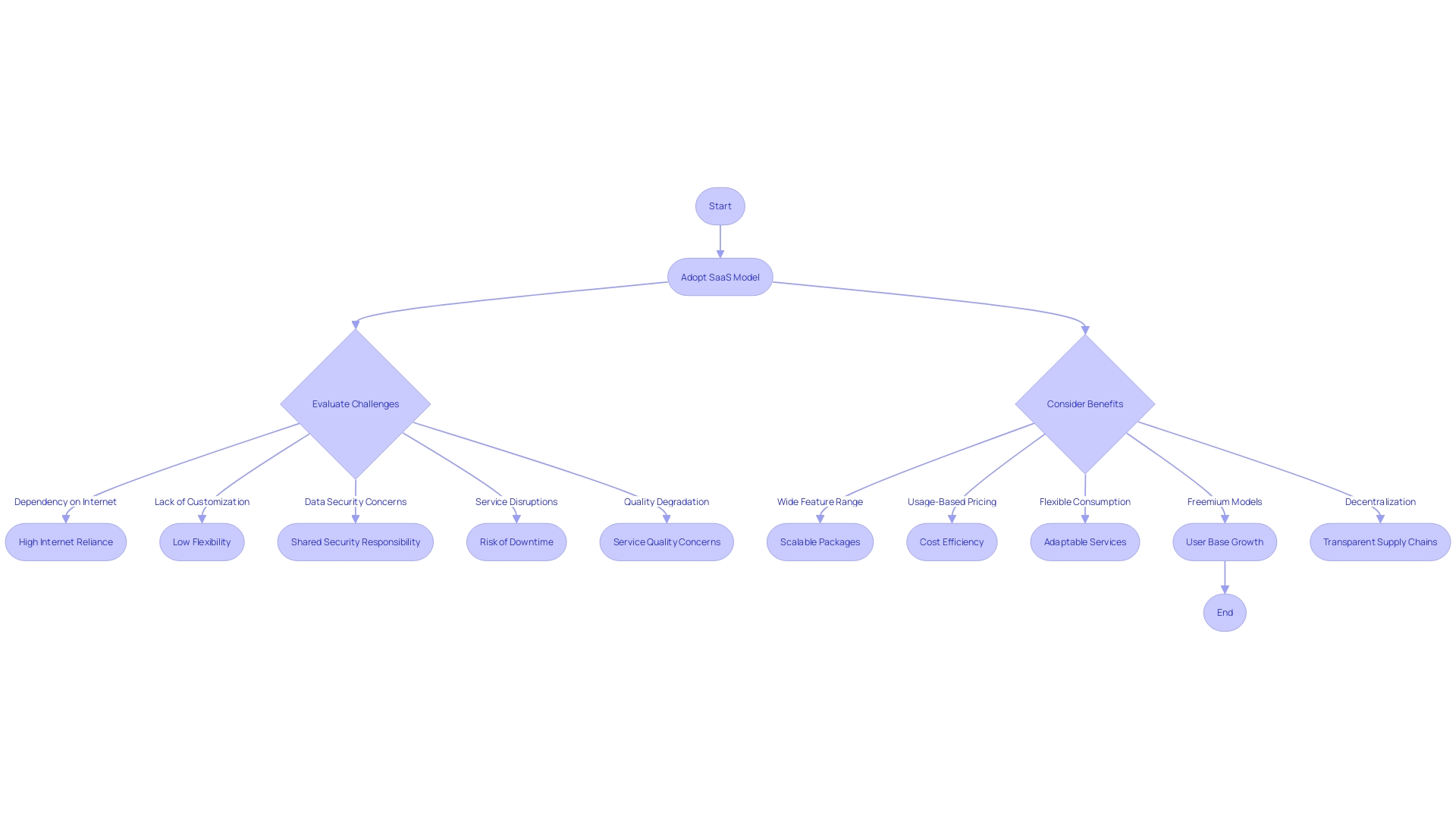
Disadvantages of PaaS
While Platform as a Service (PaaS) offers a compelling model for application development and deployment, there are considerations to weigh before fully committing to this platform. The initial acclimation to a PaaS environment can be challenging for developers, as each platform houses its unique set of tools and services that require familiarization. Furthermore, the potential for vendor lock-in is notable; transitioning services from one PaaS provider to another often demands considerable time and resources due to differing underlying architectures and service models.
Additionally, PaaS environments may limit the degree of control over infrastructure settings and network configurations, which is a critical concern for applications that necessitate fine-grained control. This limitation is also reflected in the suitability of PaaS for various applications, as it may not be the ideal choice for those requiring extensive customization or direct access to the underlying infrastructure.
The evolution of cloud computing models demonstrates that while newer technologies offer advanced capabilities, there is a proven longevity associated with established technologies. For instance, despite their age, mainframe computers continue to support essential functions in finance and transportation sectors. This underscores the importance of considering long-term viability and support when selecting cloud services.
In practice, organizations are increasingly adopting cloud-native approaches, emphasizing modular applications and APIs, and leveraging middleware technologies to facilitate data management and migration in the cloud. When scaling applications, architecture plays a pivotal role; it is vital to design systems that can gracefully handle varying loads and performance demands.
The landscape of cloud service models—from IaaS, providing the essential hardware infrastructure, to PaaS, offering a suite of development tools, and SaaS, delivering ready-made applications—is diverse. Each model presents unique benefits and constraints, and selecting the right one depends on the specific needs of the organization and the desired outcomes. As the cloud ecosystem evolves, companies continue to benefit from the pioneering efforts of those who have addressed similar challenges by open-sourcing their solutions, allowing even smaller entities to leverage the expertise of more seasoned engineering teams.
According to a survey conducted by the Linux Foundation Research, cloud adoption is widespread across industries, with a significant majority of organizations employing cloud strategies. This trend is reinforced by the broad geographical distribution of survey respondents, indicating a global movement towards cloud-native computing. The leading cloud service providers, AWS, Microsoft Azure, and Google Cloud, continue to dominate the market, yet the choice of provider should be made with careful consideration of the organization's specific requirements and the long-term strategic fit of the chosen cloud model.
When to Use SaaS
Software as a Service (SaaS) is widely recognized for its adaptability to various business needs, particularly for its ability to serve distinct market segments effectively. For burgeoning startups and small businesses with constrained IT capabilities, SaaS emerges as a cost-efficient and user-friendly option that eliminates the complexities of infrastructure maintenance. This model is especially beneficial for organizations with a geographically dispersed workforce, as it promotes effortless collaboration and ensures consistent access to applications from any location.
Moreover, SaaS is tailored for applications that necessitate swift deployment and the capability for rapid scaling, providing the advantage of immediate provisioning and elastic subscription models. Furthermore, for businesses that experience predictable and steady usage patterns, opting for SaaS could result in substantial cost reductions when compared to traditional on-premises solutions.
However, as the SaaS landscape continues to evolve, it's essential for companies to remain vigilant about opaque pricing strategies that could lead to software inflation. A staggering 57% of SaaS vendors have been found to conceal their pricing, with contracts often comprising intricate bundles that obscure price hikes. With 88% of suppliers incorporating price uplift clauses, costs can escalate unexpectedly.
To combat these challenges, organizations should strive for transparency in their SaaS expenditures, usage, and renewals. By attaining a unified view of their SaaS investments, companies can make informed decisions to optimize costs, such as identifying underused contracts or redundant tools across departments. As the market for SaaS solutions grows, informed decision-making and strategic planning become essential to navigate the competitive terrain and secure the best value for your technology investments.
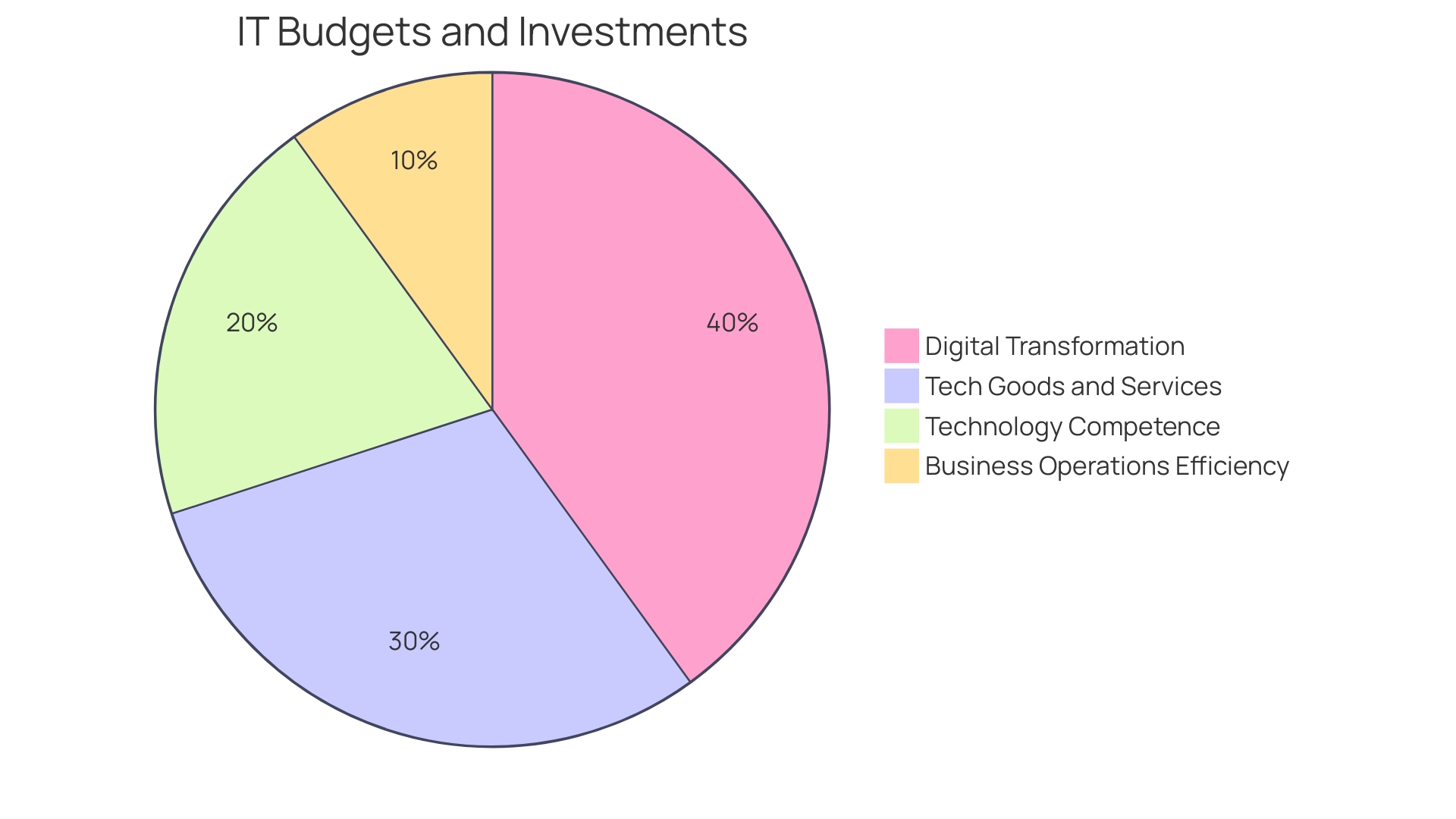
When to Use PaaS
Platform as a Service (PaaS) stands out as an invaluable asset for developers and organizations aiming to enhance efficiency and collaboration. For developers who prioritize writing code and innovating applications over the intricacies of infrastructure management, PaaS provides a comprehensive suite of tools and resources for immediate use. Organizations eager to expedite the development lifecycle can leverage PaaS for its automation capabilities and pre-built environments, streamlining the path from concept to deployment.
Moreover, PaaS is exceptionally well-suited for applications experiencing volatile demand. It offers the flexibility to scale resources dynamically, ensuring that applications can adapt swiftly to changing workload requirements. This feature is epitomized by the University of Gothenburg, which, amidst its robust research ecosystem and significant student body, turned to Red Hat Enterprise Linux® as a standard to simplify and accelerate its web platform development.
Collaborative endeavors also benefit from PaaS, as it fosters efficient teamwork and facilitates version control. A prime example of this is the engineering giant Bosch, which utilizes a digital twin to optimize the performance of its solid oxide fuel cell systems over their operational lifespan, demonstrating the harmonious synergy between development and real-time monitoring.
The landscape of PaaS options is broad, encompassing dedicated services from cloud providers, private services behind firewalls, and software deployed on public infrastructure. This diversity ensures developers can select the optimal environment that aligns with their strategic objectives. As Denise Dourado of Microsoft UK articulates, an integrated development environment like Visual Studio enables developers to write, edit, and debug their code in a singular, streamlined workspace, irrespective of programming language preferences.
The State of Developer Ecosystem 2023 report, reflecting responses from over 26,000 global participants, underscores the burgeoning role of PaaS and its intersection with AI tools such as ChatGPT and GitHub Copilot. This data reveals a technology landscape in which PaaS is not only facilitating development but also driving the adoption of AI-enhanced tools, thereby shaping the future of software creation and deployment.
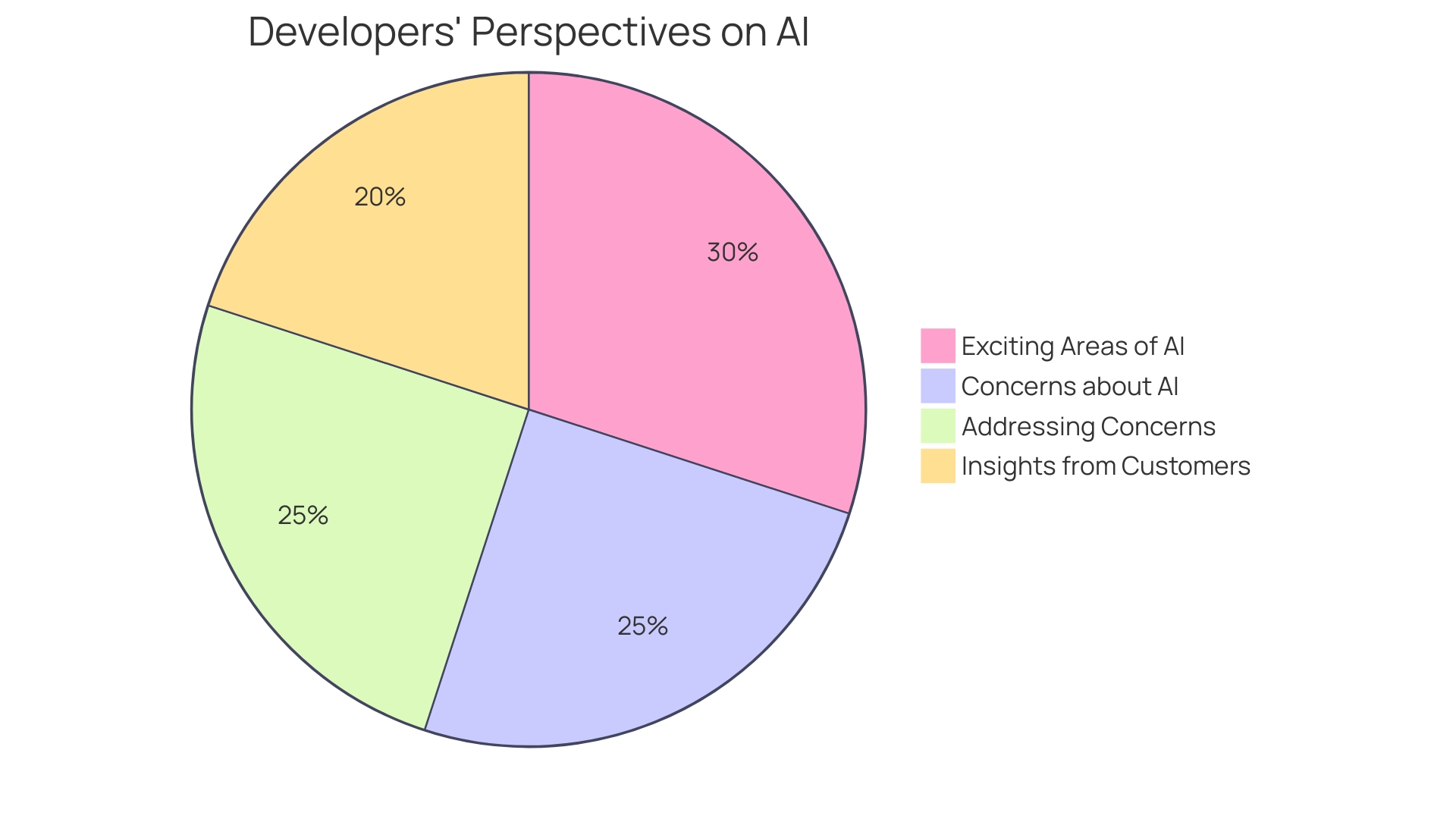
Real-World Examples of SaaS and PaaS
As cloud computing continues to evolve, the distinction between different service models becomes increasingly important for organizations aiming to leverage the cloud for their various needs. SaaS, or Software as a Service, is perhaps the most commonly recognized model, providing users with access to software applications over the internet on a subscription basis. Renowned examples of SaaS include Salesforce, which facilitates customer relationship management, Microsoft Office 365 and Google Workspace, which enhance productivity and collaboration, and Dropbox, which simplifies file storage and sharing. This model emphasizes accessibility and convenience, with a pay-as-you-go pricing structure that eliminates the need for substantial upfront investments and ensures users benefit from automatic updates.
On the flip side, PaaS, or Platform as a Service, offers a robust environment for developers to build, deploy, and manage applications without the complexity of maintaining the underlying infrastructure. Microsoft Azure, Google Cloud Platform, and Heroku stand out as popular PaaS options, providing an array of development tools and services that foster innovation and streamline the development process. These platforms are particularly advantageous for organizations that prioritize rapid development cycles and scalability.
The selection of a cloud service model, be it IaaS, PaaS, or SaaS, hinges on various considerations such as internet availability, page load times, and cybersecurity measures. It's crucial for businesses to choose a model that aligns with their strategic goals, whether it's enhancing customer engagement through SaaS applications or accelerating product development with PaaS.
Moreover, recent developments in the cloud industry, such as Oracle's expanding cloud regions and collaborations with market leaders, underscore the significance of cloud services in achieving greater economies of scale and operational efficiencies. This is evidenced by the substantial cloud expenses of companies like Snapchat, hinting at the potential for optimization and cost savings. As the market landscape evolves, companies must continuously assess their cloud service models to ensure they meet customer demands and support global expansion while maintaining profitability.
Choosing Between SaaS and PaaS
Selecting the appropriate cloud computing model is pivotal for organizations aiming to leverage cloud benefits tailored to their specific needs. Software as a Service (SaaS), exemplified by services like Netflix, offers a subscription-based access to ready-made applications, optimizing ease of use and collaborative work environments. It's ideal for businesses that require immediate productivity without the intricacies of infrastructure management. Delivering applications over the internet, SaaS solutions enable remote and global teams to operate without device or location constraints.
Platform as a Service (PaaS), on the other hand, is the go-to for developers and organizations that need a comprehensive platform for application development and deployment. It provides the groundwork for building, testing, and launching custom applications, granting developers the flexibility and control necessary for innovation. PaaS serves as a critical foundation in a market where cloud adoption is burgeoning, as noted by John Dinsdale, a chief analyst who highlights the sustained growth in cloud services bolstered by investments in generative AI technology.
When contemplating SaaS versus PaaS, businesses must weigh factors such as scalability, the potential for customization, autonomy over the environment, cost implications, and their own technical competency. As the cloud market evolves, with companies like Basecamp finding significant savings by optimizing their cloud expenditures, the decision between SaaS and PaaS becomes even more strategic. This is why understanding the nuances of each model—SaaS's turnkey solutions versus PaaS's development platform—is essential for aligning technology with business objectives and maximizing cloud investments.
Conclusion
SaaS and PaaS are two fundamental cloud computing models that offer distinct advantages for businesses. SaaS provides fully functional software applications accessed through a web browser, offering cost-effectiveness, flexibility, and scalability. PaaS offers a comprehensive development environment, streamlining the application development lifecycle and empowering developers to focus on coding and innovation.
SaaS excels in accessibility and convenience, while PaaS is ideal for organizations prioritizing rapid development cycles and scalability. Understanding the nuances of each model is crucial for selecting the most suitable cloud computing option that aligns with business objectives and maximizes cloud investments.
In conclusion, SaaS and PaaS are powerful cloud computing models that cater to different needs. SaaS provides fully functional software applications, offering cost-effectiveness and scalability. PaaS streamlines the development process, empowering developers to focus on coding and innovation.
By understanding the distinctions between these models, organizations can make informed decisions to leverage the benefits of cloud computing.




